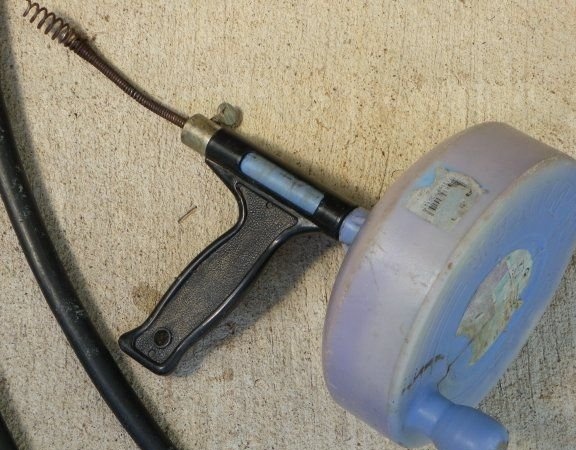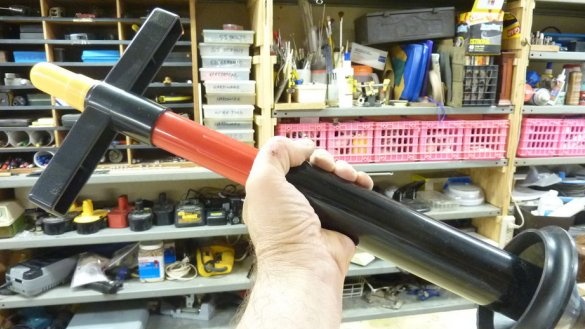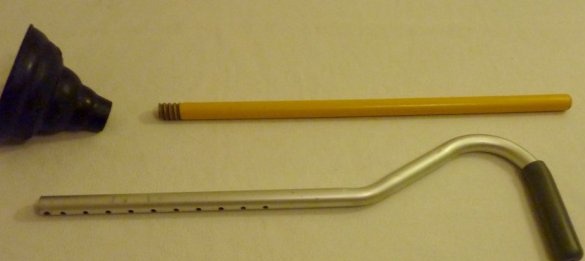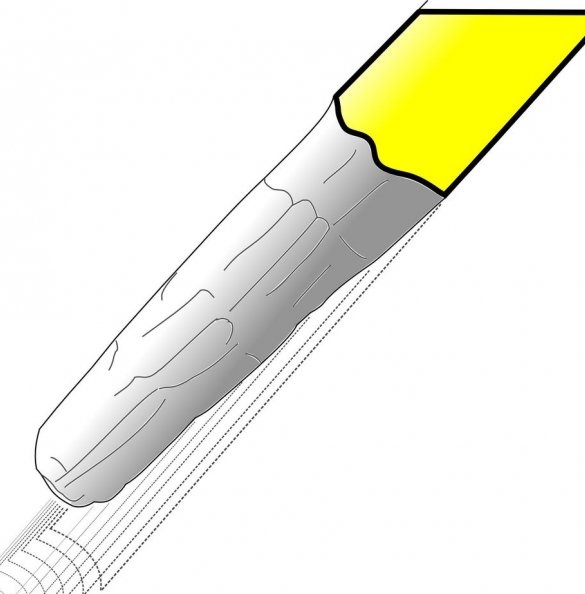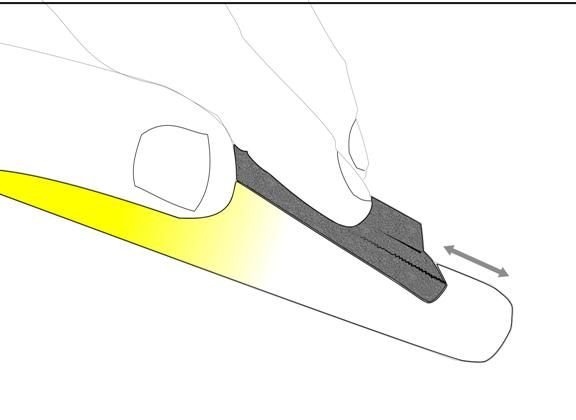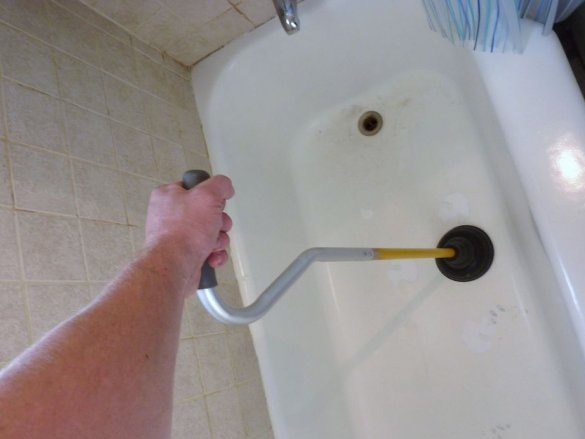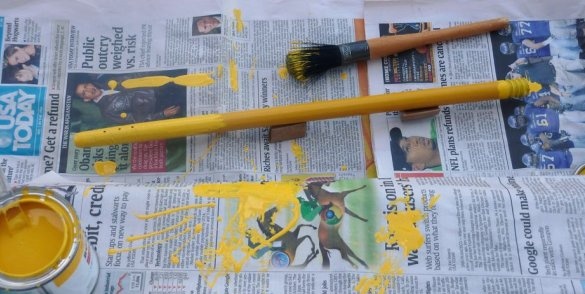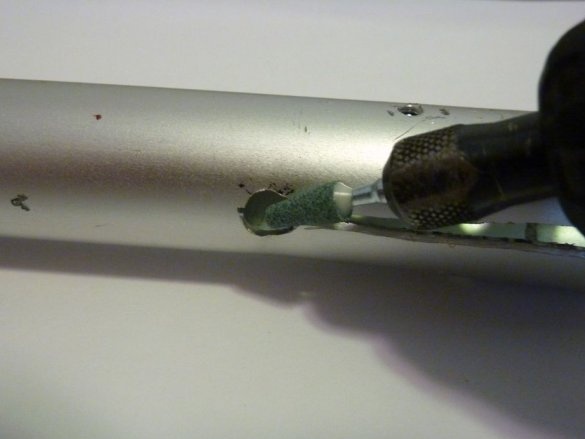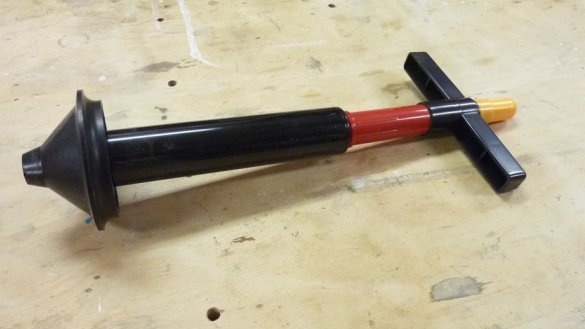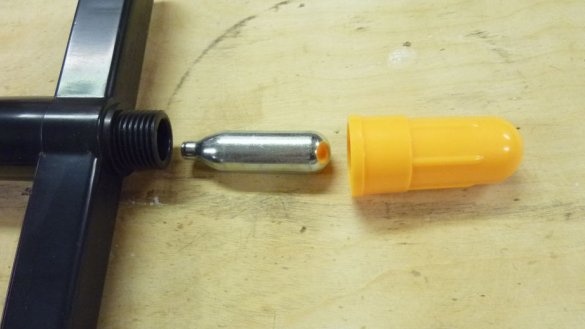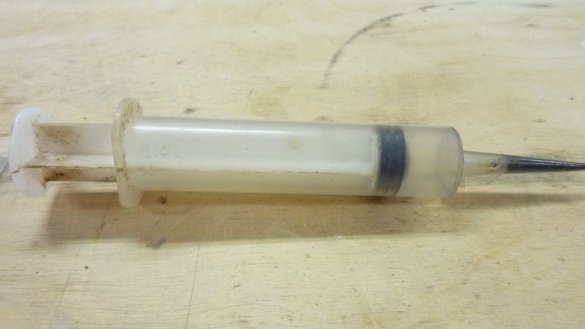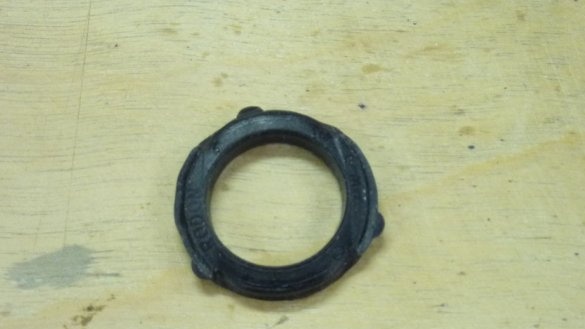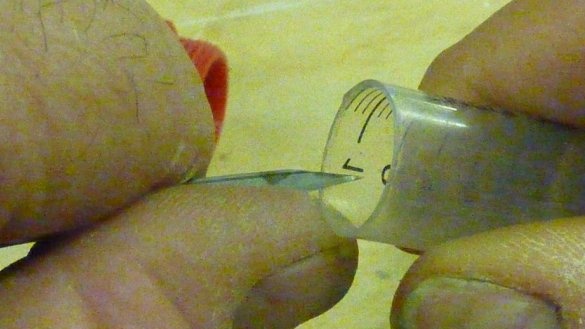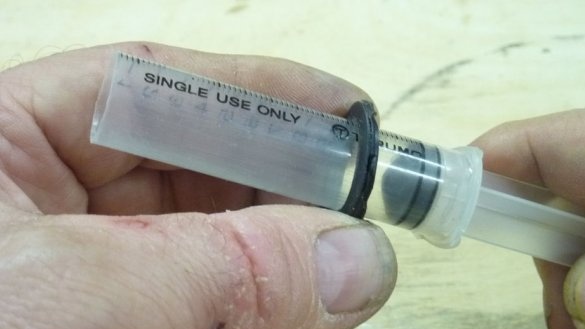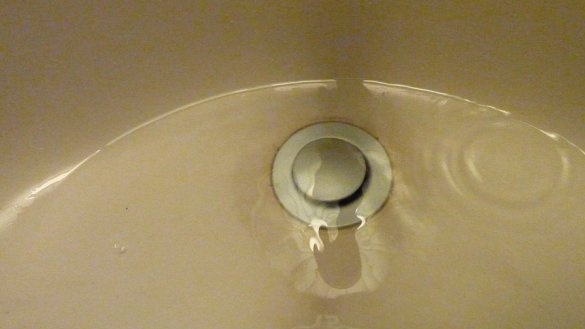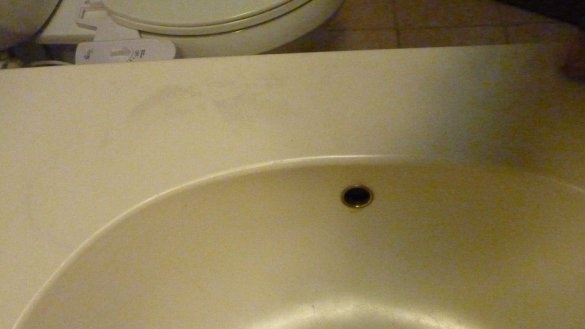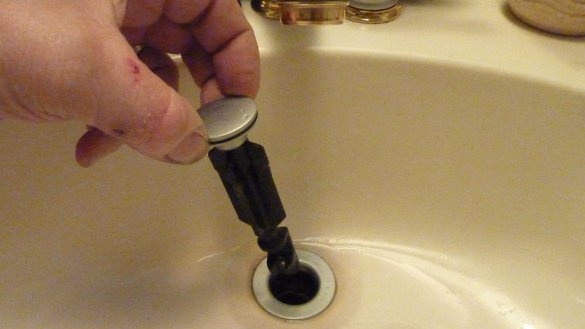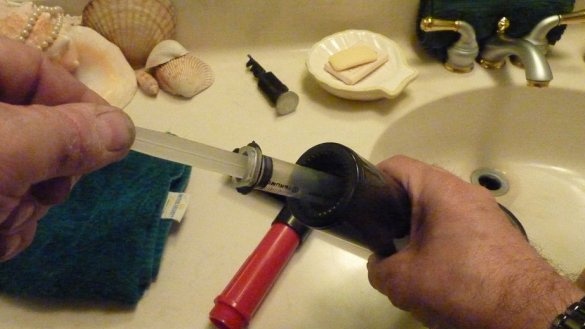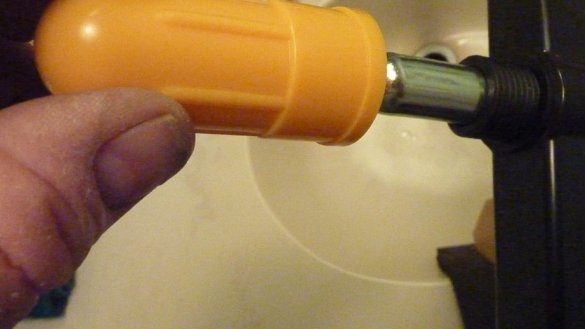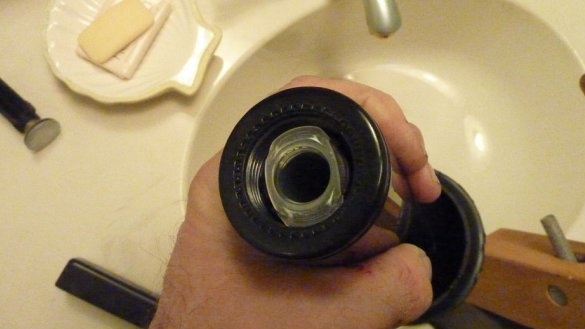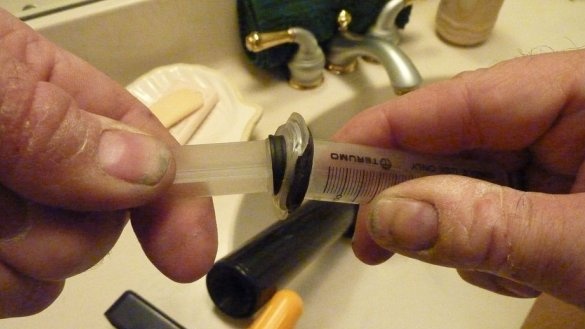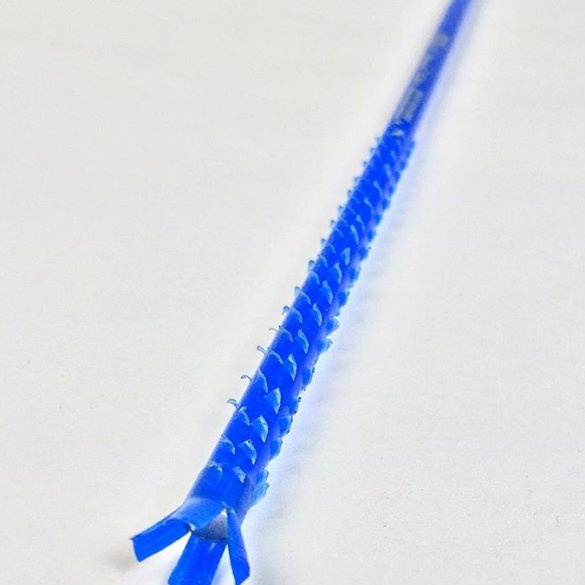In this article, we will talk about methods and tools for cleaning sewage blockages. Material from three sources has been compiled here and three tools will be considered.
Tool one: electric cable
In the first photo we see a hand tool for clearing blockages. Most likely this tool is broken. I found a similar one in an online store and the price for it is from 1500 rubles. A nylon core is placed inside the drum, and the length reaches 8 meters.
In this tool, the cable is removable and secured to the front of the tool.
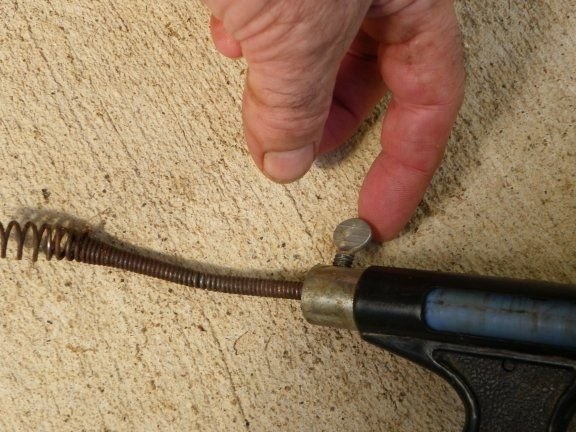


The wizard made everything easier. He simply put a hose on the cable (the price of a cable of a 3-meter cable is 160 rubles), so that the spiral protrudes from one side and the straight part from the other. The straight end of the cable must be clamped in the chuck of a screwdriver and that's it, you can clean the blockage.
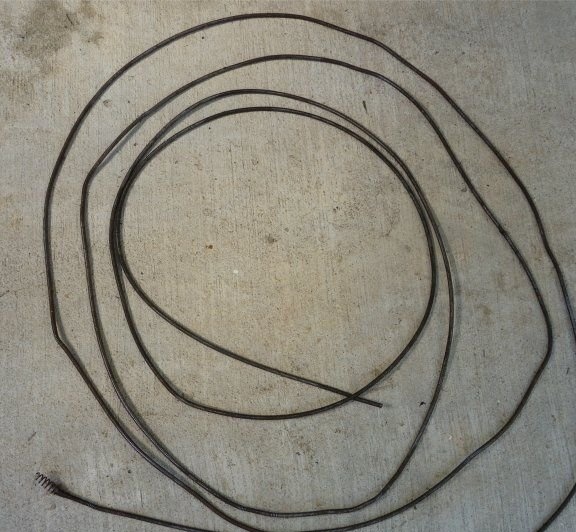

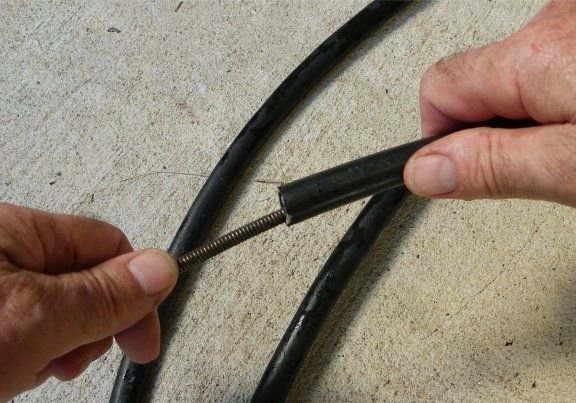

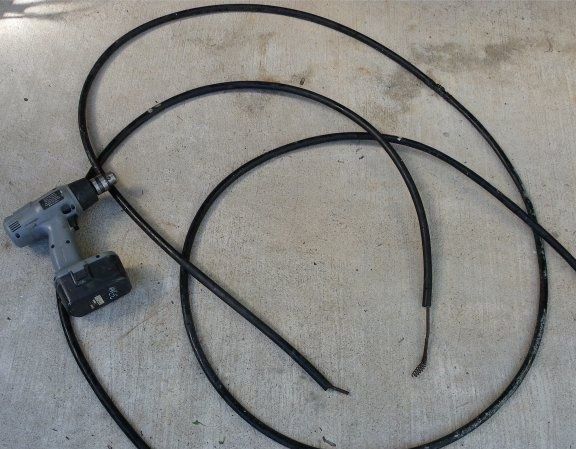


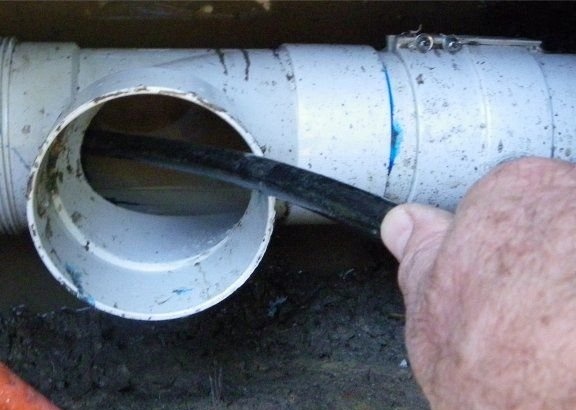

Tool two: plunger
The second tool is an ordinary plunger. All classic plungers have short handles. For a healthy person, this does not matter, but if it is difficult for a person to bend down or the arm does not work well, it can cause difficulties. The solution may be to lengthen the handle. Instead of the standard handle, the master installs a cane mounted on a wooden holder.
The third tool: pneumovantuz
Another tool for removing blockages is pneumowanthus. Moreover, there are various pneumatic air vents. There is just a type of pump, and in this (Kleer Drain) a can of CO2 is installed. This is a standard cylinder such as is used in airguns or in a siphon for aerating water.
The principle of operation of the device is as follows.
A cylinder is installed in the handle, and a special gasket in the tube. Then the device is installed by a plunger on the drain hole. The handle is pushed down. The cylinder breaks through and pressure begins to increase in the cylinder. When the pressure reaches the desired value, the gasket breaks and gas shoots into the sewer pipe.
The design is interesting and effective for difficult to remove blockages. There is one drawback, the number of gaskets in the kit is only 6 pieces, and buying new ones is expensive.
Then the master found a way out by making a replacement gasket. For this we need: a syringe, a knife and a piece of hose.
The syringe is 12 cubic meters. From the syringe, the front part with the nose and the emphasis of the stem are cut off. Put the o-ring cut out of the hose onto the syringe.
Before use, close the overflow hole and remove the plug.
Pull the syringe bar up. Insert the syringe into the device. Install the cylinder. And apply according to the instructions.
After use, the syringe is pulled out and can be used again.
In the process of working on the article, I found several more devices for cleaning the sewer. These are pneumatic couplings, but they work without cylinders and hydraulic couplings and all kinds of magnetic-mechanical ruffles.
There are various non-mechanical methods, such as "Mole", soda with vinegar, or just boiling water.
I hope that this article will be useful to anyone, and if you know other ways to deal with blockages, then write comments.

